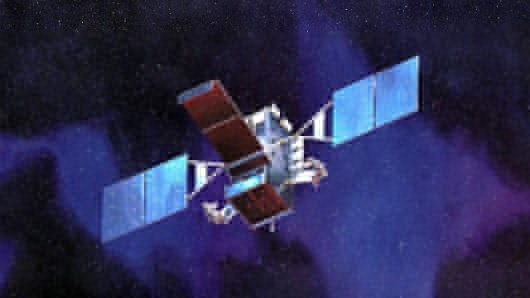The first Lockheed Martin-built Space Based Infrared System (SBIRS) geosynchronous (GEO-1) satellite is now delivering critical infrared data to users. The spacecraft is currently undergoing its rigorous operational certification process.
Data from the U.S Air Force’s SBIRS GEO-1 satellite will enhance the military’s ability to detect missile launches around the globe, support the nation’s ballistic missile defense system, greatly expand technical intelligence gathering capability, and bolster situational awareness for warfighters on the battlefield.
The spacecraft is the most technologically advanced military infrared satellite ever developed. The satellite includes highly sophisticated scanning and staring sensors that deliver improved infrared sensitivity and a reduction in area revisit times over the current constellation.
The scanning sensor provides a wide area surveillance of missile launches and natural phenomena across the earth, while the staring sensor can be used to observe smaller areas of interest with superior sensitivity. The satellite’s sensors are now performing at better than specification levels, and producing and delivering pre-certified data to the user community.
“We are looking forward to fully certifying this spacecraft for operational use and delivering these new infrared surveillance capabilities to the nation,” said Col. Jim Planeaux, director of the U.S. Air Force’s Infrared Space Systems Directorate.
Following its May 7, 2011 launch, SBIRS GEO-1 successfully activated its sophisticated infrared sensors and transmitted its first infrared payload data on June 21, 2011. The satellite is now being repositioned to its final orbital location and completing all steps necessary for certification.
The process includes an Air Force evaluation in the operational environment, and culminates with Air Force Space Command’s operational acceptance and the United States Strategic Command’s certification of the proven SBIRS GEO system.
“This satellite is delivering outstanding data to the user community and is performing exceptionally well as it proceeds through its rigorous certification process,” said Jeff Smith, vice president of Lockheed Martin’s Overhead Persistent Infrared (OPIR) mission area.
“The government and industry team is focused on executing a smooth certification process and delivering the full value of SBIRS to the warfighter.”
Leveraging lessons learned from GEO-1, the team is progressing efficiently on the path to launch for the second SBIRS geosynchronous (GEO-2) satellite. GEO-2 recently completed environmental testing and Lockheed Martin engineers will now perform final factory work on the satellite and execute a series of integrated spacecraft and system tests to ensure the vehicle is ready for flight.
Lockheed Martin’s original SBIRS contract includes highly elliptical orbit (HEO) payloads, two geosynchronous orbit (GEO) satellites, as well as ground-based assets to receive and process the infrared data. The team is also under a follow-on production contract to deliver additional HEO payloads and the third and fourth GEO satellites, and associated ground modifications.
Production of GEO-3 and GEO-4 is progressing steadily and the joint government/industry team has implemented a number of initiatives to reduce the cost of each follow-on SBIRS satellite. Some cost reduction measures include reducing staffing levels to efficiently transition from development to production, studying common parts buys between similar space programs to achieve economic order quantities, and strengthening management processes with lower tier vendors.
The SBIRS team is led by the Infrared Space Systems Directorate at the U.S. Air Force Space and Missile Systems Center. Lockheed Martin is the SBIRS prime contractor, Northrop Grumman is the payload integrator. Air Force Space Command operates the SBIRS system.










